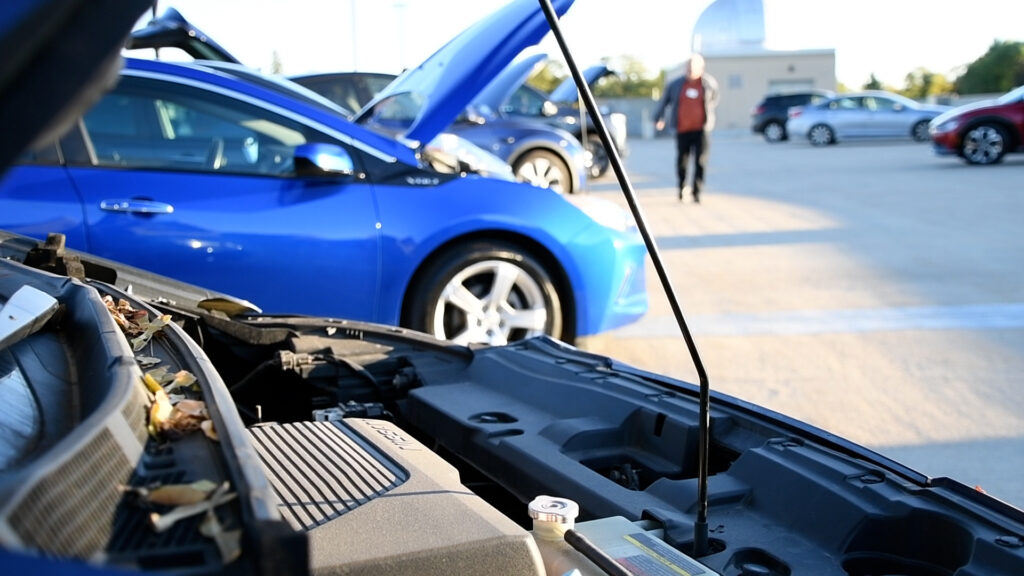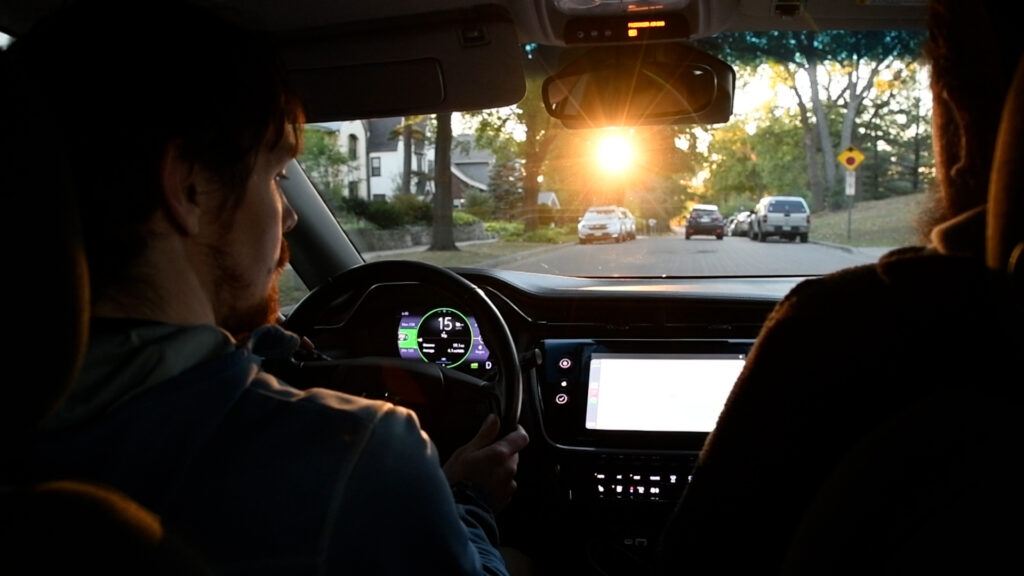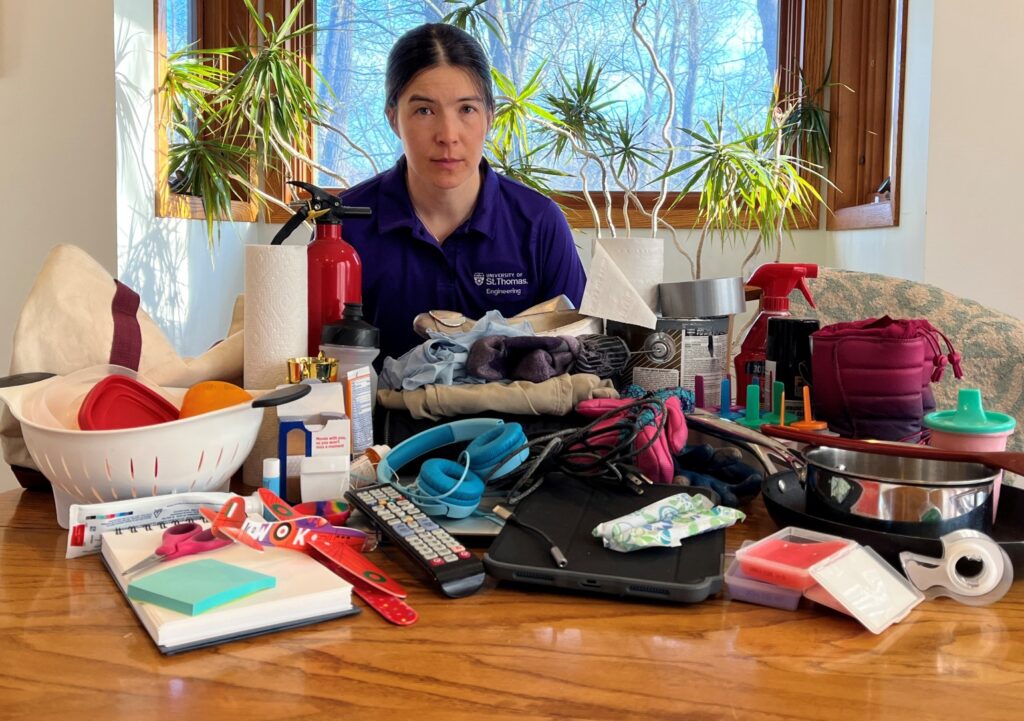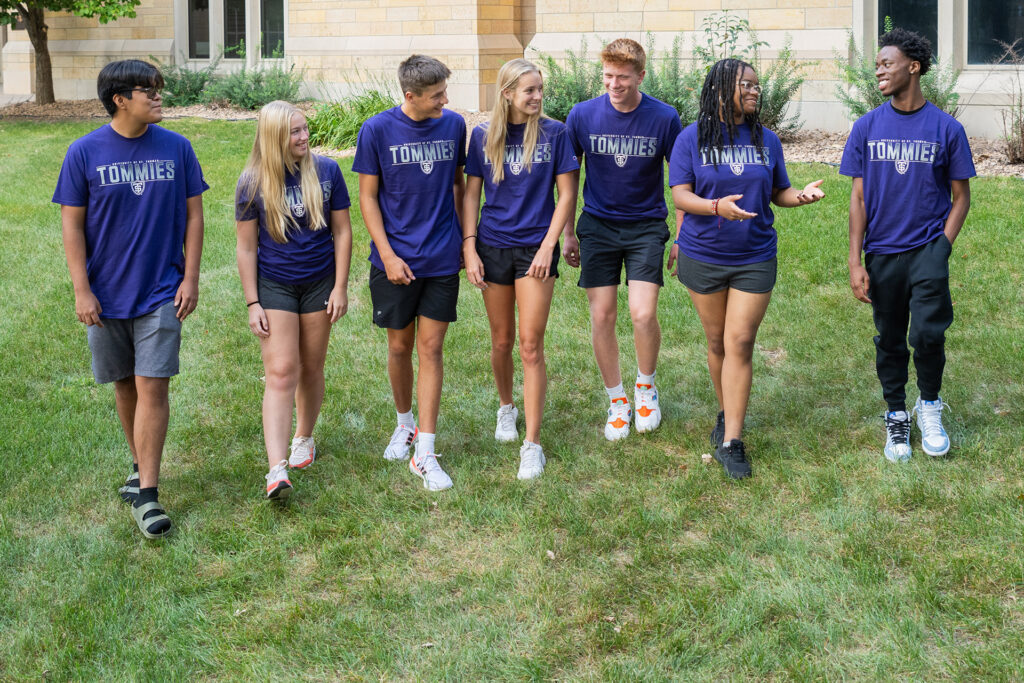Petting zoos are generally considered a highly sought-after attraction for children. Not this petting zoo taking place on a cool September night on the top floor of the University of St. Thomas Anderson Parking Facility. There were no goats to feed, rabbits to hold, or llamas to cuddle. In their place was something positively electric.
A lineup of the latest electric vehicles dotted parking stalls, with electrical engineering graduate students walking amongst them. These graduate students in the School of Engineering’s EV Market and Technologies course take part in an electric "petting zoo" of sorts each fall, getting an up-close-and-personal look at the latest vehicles to hit dealer lots.
There may not have been camels to ride, or three-year-olds screaming with glee, but there were still plenty of smiles (and test rides) to be found. The petting zoo, or EV show, is the brainchild of EV educator and course instructor, Jukka Kukkonen.
“The whole shift that is happening in transportation right now is pretty complicated,” Kukkonen said. “What we are trying to do is … understand how we are here, why is this all happening, and where are we going so that our students can then decide if they want to learn more… and figure out their new career options.”
The EV show is just one part of an extensive class centered solely around the key areas of the electric vehicle market. Students learn about smart charging technologies, charging infrastructure, and the latest models to hit the market. And there is plenty to learn in such a fast-changing industry.

“When I start each semester, I always tell the students, ‘Watch how much change we’ll see in just the next four months,’” Kukkonen said. “There are 150 new vehicles coming to market by just 2024.”
An automotive engineer by training, Kukkonen has been fascinated with electric vehicles for decades. He founded Shift2Electric in 2010, an EV market consulting and training company. Since then he’s worked with utility companies, dealers and consumers … all in an effort to champion the move from gas to electric.
“When you look at the internal combustion engine we have been using for the last 100 years – it's an excellent machine – but it’s not very efficient,” Kukkonen said.
The difference between technologies is stark. Gas motors run around 15% to 25% fuel efficiency, while electric motors usually hit more than 85% efficiency.
“That’s what the change is about – we will be able to power our driving with using much less energy and still have exactly the same or even better driving experience,” Kukkonen said.
That driving experience is something Kukkonen ensures all his students feel firsthand. Participants in the annual EV show get a chance to drive multiple different EV models.

“It’s so fun – It has a really strong kick,” Ophelia Loree said. “You probably shouldn’t, but at a green light if you hit the pedal … it’ll just take off and the acceleration is super fun.”
Loree is an engineering graduate student at the University of St. Thomas in the Twin Cities and is hoping to apply what she learns in class directly to the real world.
“My job has to do with [electrical] grid modernization and I work at a company that sells market software,” Loree said. “As time moves forward, a lot of that is going to be how can the grid handle chargers and EVs put on to it.”
Loree is thankful for a course that is designed to incorporate the latest EV technologies, even as so much of it changes week to week.
“This is nothing like many of my other courses, where we are looking at theory,” Loree said. “It’s been so much more real world … we’re learning about technology that is coming out right now.”
EV Market and Technologies is offered each fall. And as electric vehicles grow their share in the marketplace, Kukkonen believes the course will only become more important.
“Right now, most of our students are electrical engineers, but it’s very useful for a wide variety of students,” Kukkonen said. “The whole market is changing so fast, understanding is key.”






